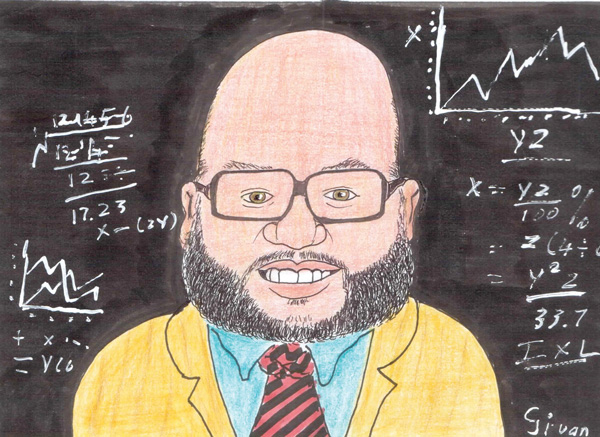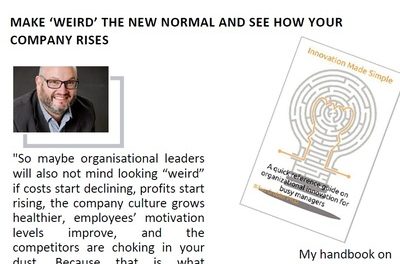
Using experiments to reduce risk in innovation

By Rikus Grobler, www.nis.co.na, [email protected].
I have discussed a number of innovation methodologies during the course of this series. Some of the methods I covered like Design Thinking and Lean Startup are used by corporates (as well as startups) to structure and de-risk their innovation activities.
Both methods drive a prototype (in Design Thinking) or Minimum Viable Product (MVP in Lean Startup) through a test-and-learn cycle and assume that using such a process is the best way to yield knowledge about the user. What this in essence means is that these methods advocate the use of experiments to gather insights before “going big”, in order to reduce risk.
In this delivery I want to unpack what this means and why I think corporates are struggling with it.
The scientific method
Let’s go back to school for a moment, when we all probably first learned about experiments. Experiments are a primary component of the scientific method. In a nutshell, the scientific method emphasizes experimentation, discovery, and inductive reasoning. People who did not like science are probably going to stop reading now, but bear with me, I won’t go into details and you don’t have to write a test on this.
In its simplest form, an experiment is simply the test of a hypothesis. A hypothesis, in turn, is a proposed relationship or explanation of phenomena.
Here is an example, albeit a very modest one to explain what this means in simple terms. For my daughter’s science fair project, we wanted to find out if playing video games influences a person’s ability to think. The hypothesis was that if a person plays video games, his or her ability to think will be influenced negatively.
Thus, we wanted to find out of there is a relationship between playing video games and a person’s ability to think – i.e. the phenomena we want to know more about or understand better. Now we had to figure out a way to test this. So, what we did was we had a couple of test subjects (a few of her friends) play a video game for 10 minutes and then write a short test immediately after playing the game.
We measured the results of how the test subjects scored on the test, and how long they took to write the test. So, we measured some variables (test score and time) and created some data. Then we had a couple of her friends only write the test, without playing the video game, and measured the same variables.
Although a very crude one, this was an experiment. We created two sets of data based on a variable that was changed (playing the video game or not), and we could compare the results to either support our hypothesis or refute it. I will not share our findings, as this is a controversial subject and ours was just a very simple way to test for this relationship.
For the scientists and statisticians out there, I know there are a lot of things an experiment must adhere to before it can be accepted as “the truth”, but the point I want to make about the purpose of the experiment is this: instead of only guessing if playing video games influenced a person’s ability to think or not, we now had some real “proof” to support or guess.
It is exactly the same for innovation. Experiments are done to minimize the “guessing”, i.e. reduce risk when trying something new. Design Thinking and Lean Startup are the scientific methods using experiments to include observation and discovery of human behaviour, the emotions behind those behaviours, and using that data to create solutions to complex problems. Solutions in the form of the products and services we create and sell to our customers.
These methods offer a way to collect and understand data, such as customer wants, needs, as well as personal histories and experiences. These types of data are especially helpful in the earliest stages of an innovation project when a lot may be unknown, even what problem you are trying to solve. It’s at this beginning stage that hypotheses are formed from the data and customer insights collected through experiments, and not guesses.
Having said all this, my hypothesis is that organisations generally avoid experimentation. We still prefer fancy spreadsheets with loads of data that are built on assumptions or “research” as opposed to “going out in the field” to experiment first.
This is because most organisations are reluctant to fund proper business experiments and have considerable difficulty executing them. Although the process of experimentation seems straightforward, it is surprisingly hard in practice, owing to a myriad organisational and technical challenges sometimes.
I am of the opinion that organisations generally lack processes for prototyping their ideas quickly when it comes to innovation. Also, experiments too often turn into “initiatives” or “projects”, for lack of a better word. Experiments are designed for learning and it is okay if they fail, whereas initiatives or projects are too important to fail. In my view, initiatives or projects are things to be avoided at least until you have learnt from some experiments.
Next Time
I have now made a case for using experiments to reduce risk in innovation. Still, organisations are not inclined to use experiments to innovate better. In the next delivery, I want to make it practical by sharing some thoughts and examples on how to actually run experiments in “real life” as part of the organisation’s innovation efforts.
I want to strengthen my case for experimentation with a quote from Jeff Bezos: “Our success at Amazon is a function of how many experiments we do per year, per month, per week, per day.”
Click on the thumbnail below to order Dr Grobler’s e-book on Innovation from Amazon.













































